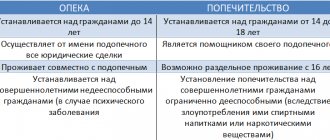What it is
To accurately calculate the hourly tariff rate in 2020, you need to consider:
- employee's monthly salary;
- type of workweek (5-day or 6-day, 40-, 36- or 24-hour);
- number of working hours in 2021
For reference, the most common type of workweek is 5 days, 8 hours a day. Teachers, service workers, and some other categories work 6 days a week, but their total working time per week will be 40 hours (usually their work schedule in hours is as follows: 7 + 7 + 7 + 7 + 7 + 5 = 40).
Regarding the duration of a 5-day work week:
- Adolescents under 16 years of age and employees of production facilities producing chemical weapons should work no more than 24 hours a week;
- no more than 36 hours a week - teachers, workers in industries with harmful and dangerous working conditions, etc.
Medical workers, depending on their position and specialty, have a 24-, 30-, 33-, and 36-hour work week.
Calculation methods
Depending on the standard working hours per month
The formula used is:
T/h = monthly tariff rate: standard hours (per month)
The norm of hours per month must be taken from the production calendar.
Example:
Inshina N.N. works at JSC Topol as a salesperson on a shift schedule. The salary per month is 20,000 rubles. The production calendar indicates the hourly rate per month - 160 hours. In October 2015, she worked 166 hours.
In order to calculate wages, it is necessary to take into account overtime.
- First, the hourly rate is calculated using the formula: 20,000 rubles: 160 hours = 125 rubles per hour.
- We calculate the overtime: 166 - 160 = 6 hours.
For these six hours worked overtime, Inshina must receive a salary supplement. According to labor legislation, the first two hours of overtime are paid with a coefficient of 1.5, subsequent ones - at double the rate:
125 rubles × 2 × 1.5 + 125 rubles × 4 × 2 = 375 rubles. + 1000 rub. — amount of overtime pay. We add them to the salary and get Inshina’s salary for October: 20,000 + 1375 = 21,375 rubles.
If for one reason or another an employee has worked fewer hours than normal, the daily work rate is calculated and multiplied by the number of hours worked.
Example:
Kulagin K.K, working on a shift schedule, has a salary of 15,000 monthly. In June, its norm is 150 hours. He worked 147 hours this month.
In order to calculate salaries, the accountant makes calculations:
- Determines the hourly tariff rate: 15,000 rubles: 150 hours = 100 rubles/hour.
- Now you should simply multiply the resulting amount by the number of hours actually worked: 100 rubles/hour * 147 = 14,700 rubles.
This is a fairly simple calculation, however, it has a drawback. The tariff rate depends on the hourly rate, which may be different every month. And the lower the standard hours, the higher the hourly rate will be. It turns out that the employee worked less in one month than in another, but will receive a salary higher than in the month in which he worked more.
Example:
Savushkin L.L. works as a security guard. He has a variable work schedule. His salary is 19,000 rubles per month. In accordance with the production calendar, in February the standard hours are 150, in March - 155 hours. In February, Savushkin worked 149 hours, in March - 151 hours.
Salary for February will be equal to:
- We determine the hourly tariff rate: 19,000 rubles: 150 hours = 126.66 rubles per hour.
- We multiply the result by the time worked: 126.66 rubles/hour * 149 hours = 18872 rubles 34 kopecks.
Salary in March:
- Hourly rate: 19,000 rubles: 155 hours = 122.58 rubles/hour
- 22.58 rubles/hour * 151 hours = 18509 rubles 58 kopecks.
It turns out that Savushkin actually worked two hours less in February than in March, but his salary was 362 rubles 76 kopecks.
On what, in your opinion, should remuneration for work depend more?
From the qualifications of the employee From the time spent on work From the conditions of employment From the complexity of job functions I have my own opinion
Depending on the average monthly number of working hours per year
The formula used is:
T/h = tariff rate per month / standard working hours per year: 12 months
Standard working hours are also taken from the production calendar.
Example:
Lavrova store seller E.N. works on a shift schedule. The monthly salary is 21,000 rubles. According to her schedule, in July 2015 she worked 120 hours.
- We calculate the tariff rate per hour using the formula: 21,000 rubles / 1,890 hours: 12 months = 133 rubles 33 kopecks.
- We determine the salary for July: 133.33 rubles * 120 hours = 15999 rubles 60 kopecks.
This calculation method allows you not to calculate the hourly rate monthly, but only once a year. And it will not change all this time. So the employee will receive an amount directly dependent on the amount of time actually worked.
Example:
Watchman Kravtsov P.P. works in shifts. His salary is 12,000 rubles per month. In 2015, the watchman worked 120 hours in March, 130 hours in April, and 110 hours in May. The standard working time for 2015 is 1800 hours.
To calculate wages for each month, you need to find out the hourly rate: 2000 rubles / 1800 hours: 12 months = 80 rubles / hour
Total to be accrued:
- 120 hours * 80 rubles/hour = 9600 rubles in March.
- 130 hours * 80 rubles/hour = 10,400 rubles in April.
- 110 hours * 80 rubles/hour = 8800 rubles in May.
The legislation does not establish one specific method of calculation. Each enterprise sets it at its own discretion, but it must be indicated in the Regulations on remuneration.
How to calculate
Let's consider 2 calculation options: for 40 and 24 hours of work per week. To calculate the hourly tariff rate from the hourly salary, the formula is used:
Example 1: 40 hours per week.
Let’s say a proofreader at a publishing house works 5 days a week, 8 hours a day.
Salary - 20,000 rubles per month.
The number of working hours in 2021 at 40 working hours per week is 1970.
Hourly tariff formula: 20,000 × 12 /1970 = 121.82 rubles.
Example 2. 24 hours a week.
A 15-year-old teenager works as a courier for a publishing house.
Salary - 15,000 rubles per month.
The number of working hours in 2021 with a 24-hour work week is 1179.6.
Formula for calculating the hourly tariff rate for 2021: 15,000 × 12 / 1179.6 = 152.5 rubles.
Estimated time of tariff rate
The estimated time here is 1 hour. For other types of vehicles this is the day and month.
To find out an employee's income per hour, his monthly salary is divided by the number of working hours per month. The latter is defined in different ways. According to the production calendar approved by the Russian government for 2021, it is:
- with a 40-hour work week - 1979 hours;
- at 36 hours - 1780.6;
- at 24 hours - 1185.4.
And if each of these numbers is divided by 12 (the number of months in a year), we get the average number of working hours per month. But the result will not be entirely objective, since months have different numbers of working days.
For ease of calculation, we will use the indicator for each month, which is given in the production calendar.
Minimum size
The legislation does not establish a minimum hourly wage rate in 2021. But when calculating it, it is necessary to take into account the following: the minimum monthly salary of an employee who has worked the full working time cannot be lower than the minimum wage. From January 1, 2019, the federal minimum wage is 11,280 rubles. It is obvious that the hourly wage rates of workers for 2021 will not be lower than those calculated from the minimum wage.
The hourly tariff rate from the minimum wage for a 40-hour work week is calculated using the formula:
If a regional minimum wage has been established in the region where the organization operates, the company should focus on it. For example, in Moscow the minimum wage is 20,195 rubles, and in St. Petersburg - 18,000 rubles.
Payroll example
The basic formula for calculating wages according to the considered system is as follows:
ZP = T * V , where
- ZP – salary;
- T – tariff established for a specific employee;
- B – actual time worked.
Specific formulas for calculating hourly wages can be established within enterprises. They may take into account qualifications, bonuses, and preferential conditions.
For better understanding, consider an example. Employee A is a security guard in the company. The employment contract stipulates conditions, including an hourly rate of 75 rubles. In May, the employee worked 200 hours. In this case, the salary for the billing period will be: 200*75=15,000 rubles.
How to calculate overtime
Calculating the hourly tariff rate is necessary to correctly pay the employee for overtime hours. According to the Labor Code, for the first 2 hours the rate per hour of work is multiplied by 1.5, for subsequent hours - by 2.
Example 3.
An urgent job arose that cannot be “postponed until tomorrow,” and the proofreader worked 11 hours instead of 8. Then he will be paid for 3 hours (using the average hourly wage rate in 2021 from Example 1):
121.82 (hours) × 2 (first 2 hours of processing) × 1.5 (increasing factor) + 121.82 (hours) × 1 (third hour of processing) × 2 (increasing factor) = 609 ,1 ruble.
IMPORTANT!
Teenagers under 18 years of age cannot be involved in overtime work, so we will not provide formulas for courier workers.
Pros and cons of the hourly wage system
The mechanism for calculating wages for each hour of work has positive and negative characteristics for both parties. The benefits for the employer are as follows:
- the working hour is a constant value (while the working day can change its duration);
- it simplifies the calculation of the allowance due in the absence of an employee for a certain period of time;
- convenience in calculating salaries for part-time workers and flexible work schedules;
- payment of funds exclusively for working hours;
- more efficient use of workers' time.
The disadvantages for a manager include:
- reduced work efficiency in the absence of bonus payments;
- the need to control working hours (sometimes the introduction of an additional controller position is required).
It is worth separately considering the advantages of the hourly payment principle for the employees themselves. First of all, citizens with such a system can clearly draw up their work schedule and plan their income. Also, the tariff conditions are suitable for people with irregular schedules. For example, a teacher may be busy every day for a different number of hours, depending on the number of classes taught. With a fixed rate, the employee will receive exactly as much as he earned, since the uneven workload is taken into account.
One of the disadvantages for the employee is the lack of incentive for regular hourly pay (without bonuses). Also, situations often arise when the employer sets a significant amount of work per hour, thereby deliberately depriving the employee of the opportunity to receive a bonus.
Application in practice
The salary in an employee’s salary is a fixed amount, which is payable for the time actually worked. If the employee was on vacation, sick leave or time off during the reporting period, he will be paid the salary in proportion to his actual time at work.
For example, an employee’s salary is 20 thousand rubles. per calendar month. For 12 working days, the employee was on sick leave, i.e., based on the results of work, he will be paid an official salary in the amount of 10 thousand rubles if there were 24 working days in the month.
The following indicators influence the amount of official salary:
- Experience;
- Qualification;
- Place of residence and activity;
- Other factors.
It should be understood that the employee will not receive the salary amount specified in the contract in person. Mandatory payments (taxes) will be excluded from it and bonuses paid based on performance will be added.
Salary remuneration systems are used in government agencies, budgetary and municipal organizations. Often the scheme is used in the field of sales, if the minimum part of the earnings for managers is set at a constant amount, and the remaining payments depend on the actual results of work.
The tariff rate, as the amount of remuneration for fulfilling a labor standard, is paid for a specified period of time. In addition to the employee’s qualifications, position, rank, category, the period of activity is taken into account.
Tariff periods:
- In an hour. They are used for shift work schedules, to calculate payment for overtime work, for night shifts, on weekends, etc. In calculations, daily tariff rates are used if the number of days of actual attendance at work during the week differs from 5.
- Per day. A certain number of hours is established that must be worked on each shift.
- Per month. The actual number of days worked per month is not taken into account; the monthly rate will be paid only if the month is worked in full.
This system is used for piecework and time-based work, in agricultural enterprises, in construction, industry, etc.
For example, if an employee’s tariff rate is 300 rubles per hour, then with a shift of 8 hours a day he will earn 2,400 rubles, per month 55,200 rubles. (if there are 23 working days in a month).
If the employee went to work at night, the tariff rate increases by at least 20%; when working on weekends or holidays, the employee will be paid plus 100% of the tariff rate or given an additional day off.
What is salary
Before you understand the difference between a tariff rate and a salary, you need to review these two concepts in detail. In fact, salary is a fixed amount of an employee’s earnings, which is accrued for the performance of his official duties . In simple words, it is paid in full only if two important conditions are met: that the employee fulfills his job duties and remains at the workplace in accordance with his work schedule.
Wages and salary are two different concepts, for the reason that a fixed sum of money is just part of an employee’s earnings; in addition to it, he can receive various allowances, for example, bonuses and other payments. The definition of salary means a fixed amount that an employee is guaranteed to receive based on the results of the month worked, provided that he stayed at work in accordance with his work schedule.










